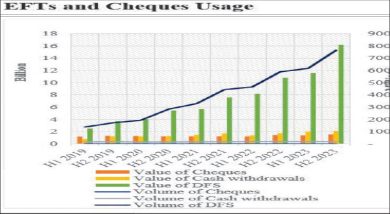Soaring inflation rates burden Sadc, Malawi’s inflation highest

High inflation rate has been singled out as one economic challenge crippling the Southern Africa Development Community (Sadc) macroeconomic programme, a Sadc report has revealed.
Sadc executive secretary Tomaz Augusto Salomao’s report seen by Business News, while describing inflation as the most problematic indicator, explains that only three countries out of the 14 member states met the Sadc inflation target of less than five percent in 2012, and Malawi is the worst performer.
“Inflation remains the most problematic of the primary indicators, with only three [Mauritius, Mozambique and Zimbabwe] out of the 14 member states having met the target of less than five percent,” says Salamao .
According to Sadc macroeconomic statistics we have gathered, the average inflation rate for the Sadc region in the year 2012 remained unchanged from the 2011 rate at 7.8 percent.
But Salomao explains that developments in the global prices of commodities such as food and fuel contributed to the inflationary pressures in some of the member States.
“Increases in [average] inflation were steeper in Malawi at 18.4 percent in 2012 from 7.6 percent in 2011 as prices adjusted following the devaluation and floatation of the kwacha,” Salomao says.
Malawi and other two countries, namely Angola and Tanzania, according to the Sadc executive secretary, recorded double-digit inflation last year.
However, Malawi’s year-on-year headline inflation rate for the month of July, 2013 has further decelerated to 25.2 percent which represents a 2.7 percentage points ease.
This is the fifth month in a row Malawi’s inflation rate-the rate at which the general level of prices for goods and services is rising-has registered a decline this year beginning the month of March.
Economic analysts have attributed the continued tumbling of inflation to the availability of cereals on the market, especially maize and the ease in the adjustment in the price of fuel coupled with a tight monetary policy by the Reserve Bank of Malawi (RBM).
“The year on year headline inflation for the month of July 2013 stands at 25.2 percent, 2.7 percentage points down on the month before .
The urban and rural rates stand at 34.2 percent and 24.2 percent respectively,” said the National Statistical Office (NSO) on Thursday.
The continued ease in the general price level comes amidst the stability of the local currency, the kwacha with respect to other major foreign reference currencies mainly anchored by the low demand for foreign exchange on the market as the kwacha leans towards an equilibrium price with other currencies.
“Non-food inflation has maintained its descent settling at 30.7 percent from 32.5 percent for last month,” added NSO.
The slowing down in the rate of inflation should be a relief to consumers as their disposable income-money available for spending and saving after income taxes have been deducted-would relatively buy as much basic commodities than before.
But in an interview yesterday, an economic commentator Mathias Kafunda, who is a programme officer in Economic Governance at the Centre for Social Concern (CFSC), said consumers should not expect immediate cuts in the prices of goods and services in the wake of declining inflation rate.





